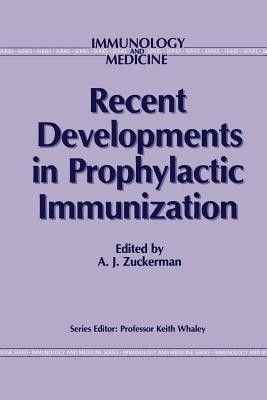Recent Developments in Prophylactic Immunization(English, Paperback, unknown)
Quick Overview
Product Price Comparison
It has been said that "never in the history of human progress has a better and cheaper method of preventing illness been developed than immunization". This is well illustrated by the WHO Expanded Programme on Immunization (EPI) which in developing countries is now preventing nearly a million deaths annually from measles, pertussis and neonatal tetanus, and for which there is a commitment by the WHO and UNICEF to protect all children by immunization by the end of the decade. This enormous undertaking will be facilitated by the rapid advances in molecular biology and recombinant DNA technology, in the understanding of immunological mechanisms and by the production and application of monoclonal antibodies so that the structure and location of important antigenic determinants or epitopes can be determined. Chemical synthesis of oligopeptides has been simplified, and computer programmes and X-ray crystallography provide the tools for the determination of three-dimensional structure of proteins, so that the structure and location of important antigenic determinants or epitopes can be predicted. These techniques have opened the way to the improvement of existing vaccines and to the development and production of new vaccines against infections for which vaccines are not available. New vaccines under development include vaccines against hepatitis B, hepatitis A, malaria, vaccines for typhoid, cholera, rota virus infection and other diarrhoeal diseases, leprosy, rabies, the acquired immune deficiency syndrome (AIDS), rubella, EB virus, schistosomiasis and other infections. These recent developments are discussed in the volume by internationally recognized experts assembled from several countries.


